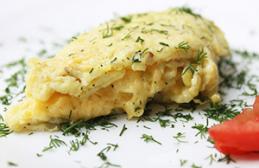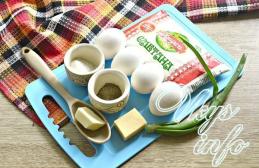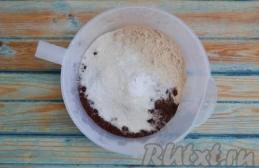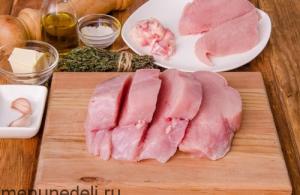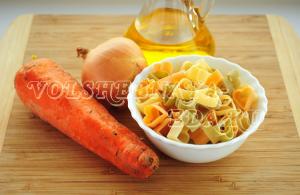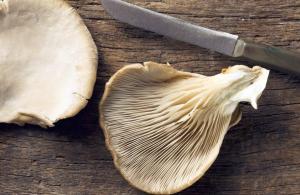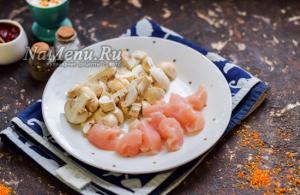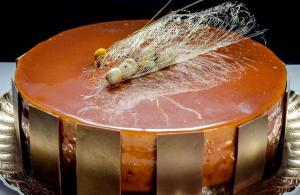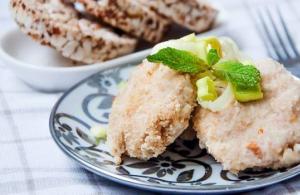The birth of cava can be considered 1872, when Josep Raventos from the Codorníu company, returning from France to Catalonia, impressed by what he saw, released the first Spanish sparkling wine made using labor-intensive champagne technology.
For the first hundred years, these wines were called Champaña (champagne), since champagne was the model that Josep Raventos tried to get closer to. But in the 1970s, the French achieved exclusive rights to the “champagne” label and a legislative ban for the rest of Europe on the use of this name. There was a need to choose an alternative name for Spanish sparkling wines. The choice fell on the word “cava”, and in the country’s wine legislation a corresponding denomination (Spanish appellation) appeared - Cava, reserved exclusively for white and rose sparkling wines.
And with the emergence of their own name, cava producers began to diligently differentiate themselves from their famous French rivals in an attempt to find themselves.
Unencumbered by Champagne's hefty price tag, Cava was promoted as a wine that didn't require a special occasion to enjoy it, yet offered a quality drink with bubbles as good as Champagne.
The first Cava wines were produced exclusively in Catalonia. Modern Cava can be produced in many different parts of Spain: Aragon, Navarre, Rioja, Basque Country, Valencia and Extremadura all have areas included in DO Cava. However, in practice, less than 10% of this national sparkling wine is produced in these regions. The heart of production can still be considered the municipality of Sant Sadurní d'Anoia in Catalonia.
There are three main varieties of cava: Macabeo, Parellada and Charel-lo. But currently, the use of textbook “champagne” varieties - Chardonnay and Pinot Noir - is also practiced.
Macabeo (aka viura) makes up about half the standard blend. But not so much because of its taste merits (it is quite simple), but as a winemaker’s insurance: these grapes form ovaries relatively late, so the risk of crop loss in the event of spring frosts is not high.
Curious, slightly earthy aroma, which distinguishes cava from champagne, is usually attributed to the Charel-lo variety.
Pinot Noir and Monastrell (aka Mourvèdre) are used to add depth and color to Cava Rosado (aka Cava Rosé)
Garnacha (aka grenache), malvasia and trepat are also allowed in the production of cava, but the latter is only allowed in rosé wines.
The requirements for the production process for cava are in many ways similar to the regulations of Champagne: all cava must be aged on lees for at least 9 months and reach a strength of at least 10.8% and no more than 12.8%.
The gradation of kava according to the degree of final sweetness/dryness is as follows:
- Brut Nature: 0-3 g/l residual sugar.
No dosage. - Extra Brut: 0-6 g sugar per liter
- Brut: 0-12 g/l
- Extra Seco (Extra dry): 12-17 g/l
- Seco (Dry): 17-32 g/l
- Semi-Seco (Semi-dry): 32-50 g/l
- Dulce (Sweet): 50 g/l
Sources: portal
Sparkling wine has a euphoric effect on humans. This is probably why it appeals to people with creative professions. The American writer Ernest Hemingway openly admitted his love for champagne more than once, and in the operetta by Johann Strauss (son) “Die Fledermaus” at the end of one of the scenes the choir sings: “Long live champagne! It is this that is the real king!”
Where did champagne come from in Spain?
Everyone will say that sparkling wine is produced in France. However, unlike the situation with cognac, which can only be produced in this country, Spain also produces champagne. How could it happen that the French willingly shared their national treasure with the Spaniards? The fact is that in ancient times, in the vicinity of Reims, where the famous sparkling wines were produced, vineyards began to die. To preserve the unique varieties, the Spaniards placed the vines on their land. When the phylloxera that was destroying the vineyards in Reims was over, French winemakers returned these crops to their historical homeland. However, they had to agree to return the favor and allow the Spaniards to produce sparkling wine, officially recognized as champagne. However, the desire to create sparkling wine among Latinos appeared much earlier. The credit for the fact that Spain produces champagne today goes to Don José Raventos, who was the owner of a winery or, as the local aborigines say, a bodega called Codorniu, located in Catalonia. Back in 1551, the production of classic white and red wines began under this brand. Roventos developed a passion for bubbles around the 1860s. Then he traveled around Europe, selling wine from his enterprise along the way. So Roventos was brought to Champagne, where, naturally, he was treated to champagne. Being strongly impressed by this tasting, the winemaker in his native Penedes decided to make the same drink. However, here Roventos was faced with an unexpected problem - he had purchased equipment, but what to do with the raw materials? In France, sparkling wine is traditionally made from three grape varieties - Pinot Noir, Pinot Meunier and Chardonnay. In Spain, accordingly, they were not grown then. A solution was found, albeit not very elegant, but quite successful: Roventos simply took three varieties that grew side by side in his vineyards. Among the lucky ones were Xarello, Parellada and Macabeo. The first sparkling wine made from these Spanish varieties turned out to be quite successful. Roventos was triumphant, and the winemakers began to use the three varieties he had chosen for champagne out of habit, without bothering to look for new combinations. By the way, Spain introduced the first local champagne around 1872. After that, for 75 years it was manufactured by only two companies - these are, of course, Codorniu and Freixenet.
However, here Roventos was faced with an unexpected problem - he had purchased equipment, but what to do with the raw materials? In France, sparkling wine is traditionally made from three grape varieties - Pinot Noir, Pinot Meunier and Chardonnay. In Spain, accordingly, they were not grown then. A solution was found, albeit not very elegant, but quite successful: Roventos simply took three varieties that grew side by side in his vineyards. Among the lucky ones were Xarello, Parellada and Macabeo. The first sparkling wine made from these Spanish varieties turned out to be quite successful. Roventos was triumphant, and the winemakers began to use the three varieties he had chosen for champagne out of habit, without bothering to look for new combinations. By the way, Spain introduced the first local champagne around 1872. After that, for 75 years it was manufactured by only two companies - these are, of course, Codorniu and Freixenet. Turning Champagne into Cava Wines
It must be said that Roventos did not have a goal to outdo the French champagne producers. And there was no point in blindly imitating them either. Moreover, the sparkling wine Roventos received had a completely unique character. Over time, Spain classified its champagne as sparkling wine Cava. This term still refers to sparkling wine produced in Spanish Catalonia. Initially, it was made using classical technology, observed by Roventos in France. The main rule that the Spaniards strictly followed was the secondary fermentation of the drink directly in the bottle. However, French champagne and Cava sparkling wine have a number of fundamental differences. Catalan winemakers appreciated the work of Roventos. It must be said that they had one local tradition - on Sundays, after the end of the liturgy, which lasted about 10 hours, they gathered together to discuss matters. At one of these meetings, winemakers came up with a rather ambitious plan - since local varieties can make quite decent sparkling wine, then why not reorient all producers from Penedes to its production? As a result, this region of Catalonia would turn into something like Spanish Champagne.
But Spain produced decent champagne, and over time, local winemakers began to feel proud. They quite rightly believed that their sparkling wine deserved recognition in itself, and not because it was an analogue of another popular drink. In the 1970s, the designation “sparkling wine Cava” was finally assigned to Spanish champagne. After that, sparkling wine began to be produced almost throughout the country. Initially there were no territorial restrictions on this matter. But Cava champagne is mainly made in Catalonia - this region accounts for over 90% of the sparkling drink made in Spain. The champion can be called the area of Sant Sadurni d'Anoia, where the conditions turned out to be the most favorable. But in 1986, Spain joined the Common Market organization, which later transformed into the EU. To do this, local winemakers had to pass a special law, Denominacion de Origen (DO), regulating the rules of production and the boundaries of the region where champagne is produced. The Spanish appellation, which received official permission to produce Cava champagne, is spread over 11 provinces - Catalonia, Aragon, Valencia, Rioja, Navarre, Basque country, etc. Sparkling wine is produced in 270 bodegas located in this appellation. The number is, of course, impressive, but in fairness it is worth noting that all these factories produce only a third of the volume of sparkling wines produced in Champagne. According to local rules, it is not forbidden to mix berries from different vineyards when producing champagne. The main thing is that the site itself is registered. In 1991, the regulatory board DO Cava was created. Its head office is located in a city called Vilafranca del Penedes, but employees control the sparkling wine Cava, produced throughout Spain. But the city of Sant Sadurni d'Anoia, located literally next door, has become, although not the official, but generally recognized capital of Cava. It is here that the bodegas Codorniu and Freixenet are located, which were the first to produce sparkling wine in Spain.
Production of sparkling wines Cava
.jpg) It should be remembered that Spanish Cava sparkling wine is not an imitation of French champagne, but a completely independent drink. However, their production technologies have quite a lot of similarities. The vineyards from which the grapes are harvested to produce Champagne and Cava sparkling wine grow on soils with a similar composition. The climatic conditions in the Champagne and Cava appellations are also very similar. A major role in both cases is played by the proximity of large bodies of water - the English Channel and the Mediterranean Sea, respectively. Champagne and Cava sparkling wine are produced using the same classical technology, in which the drink undergoes secondary fermentation in the bottle. In addition, they have a similar classification that characterizes sweetness. Both Champagne and Cava sparkling wine come in non-vintage and vintage (made from grapes from the same harvest). Cava is traditionally harvested by hand. It starts at the end of August and lasts until the end of October. The grapes are placed in stainless steel trailers or boxes with a capacity of 25 - 30 kg and sent to the nearest winery. Every 150 kg of grapes produce about 100 liters of juice. Moreover, Cava champagne is made only from the first pressing juice of Mosto Flor, which is considered the softest. It is filtered and subjected to primary fermentation. The resulting wines of various varieties are mixed by the oenologist into a specific blend. They are bottled and undergo secondary fermentation, which consists of several stages: Bottling - wine material with wine yeast, sucrose or concentrated grape juice is placed in bottles, which are stored in the cellar for 9 months;
It should be remembered that Spanish Cava sparkling wine is not an imitation of French champagne, but a completely independent drink. However, their production technologies have quite a lot of similarities. The vineyards from which the grapes are harvested to produce Champagne and Cava sparkling wine grow on soils with a similar composition. The climatic conditions in the Champagne and Cava appellations are also very similar. A major role in both cases is played by the proximity of large bodies of water - the English Channel and the Mediterranean Sea, respectively. Champagne and Cava sparkling wine are produced using the same classical technology, in which the drink undergoes secondary fermentation in the bottle. In addition, they have a similar classification that characterizes sweetness. Both Champagne and Cava sparkling wine come in non-vintage and vintage (made from grapes from the same harvest). Cava is traditionally harvested by hand. It starts at the end of August and lasts until the end of October. The grapes are placed in stainless steel trailers or boxes with a capacity of 25 - 30 kg and sent to the nearest winery. Every 150 kg of grapes produce about 100 liters of juice. Moreover, Cava champagne is made only from the first pressing juice of Mosto Flor, which is considered the softest. It is filtered and subjected to primary fermentation. The resulting wines of various varieties are mixed by the oenologist into a specific blend. They are bottled and undergo secondary fermentation, which consists of several stages: Bottling - wine material with wine yeast, sucrose or concentrated grape juice is placed in bottles, which are stored in the cellar for 9 months; Remuage - turning and lightly shaking the bottle. Gradually, it is completely turned upside down so that the remaining yeast and sediment collect in the neck;
Disgorgement – removal of sediment. To do this, the neck of the inverted bottle is frozen and the cork is removed along with the frozen sediment;
Corking - the volume of wine in the bottle is restored by varying the amount of sugar (it is at this stage that Cava becomes brut, dry, semi-dry or sweet), and finally sealed with a cork stopper;
Labeling and packaging - labels, a necklace, a control stamp are glued onto the bottle and the neck is wrapped in foil. Cava sparkling wine can be white or pink. Champagne Spain produces soft, fresh, with a delicate fruity and yeasty taste. There is no excessive acidity in this drink. And, by the way, it costs less than French sparkling wine. This is facilitated by many factors: vineyards in Catalonia are not as expensive as in Champagne, and the Spaniards have more modern technologies, and production volumes are larger. However, champagne and Cava sparkling wine are not competitors at all. Unlike its French ancestor, Cava does not claim to be a symbol of luxury. The purpose of this drink is to lift your spirits, which it does quite well.
Although Cava is called "Spanish champagne", this wine is worthy of respect in its own right.
In 2014, domestic sales of kava increased for the first time in two years, by 7.54%. Pedro Bonet, Chairman of the Cava Regulatory Council, presenting these results highlighted the “excellent recovery” in the domestic Cava market, also indicating the commitment of local and foreign consumers to the premium segment of Cava wines. Cava is now on the verge of introducing a new top tier of sparkling wine classification, "Cava de Paraje Calificado", which will include wines made from grapes from a specific site, which will be classified according to its "unique climatic and soil characteristics".
In the meantime, here are some key facts to help you understand the world of Cava wines.
Cava is mainly produced in the Penedes region of Catalonia

Cava has its own appellation (Denominacion de Origin), which regulates the permissible places of production. It was created in 1959, and is unique because it covers eight geographical areas throughout Spain. However, the vast majority of cava is produced in the Catalan region of Penedès, which accounts for about 95% of production. The largest producers in the region are Codorníu and Freixenet.
Cava is also produced in regions such as Rioja, Aragon, Valencia, Badajoz, Castile and Leon, and Navarre.
Three main grape varieties are used in the production of cava

Catalan Cava is made from three main grape varieties - Xarello, Parellada, Macabeo/Viura.
Xarello provides structure, Parellada provides rich, creamy character, and Macabeo provides acidity and freshness. Sometimes Chardonnay is added to the blend.
Red grapes, including Garnacha, Pinot Noir and Trepat, are used to produce Cava rosé wines.
Cava is produced using the same method as champagne.

All Cava is produced in the same way as Champagne; producers follow the traditional method of producing sparkling wines by subjecting them to a second fermentation in the bottle. All Cava wines must spend at least nine months on the lees, which gives them smoky and rubbery tones rather than the bready notes of French Champagne.
In the past, Cava was often referred to as "Spanish Champagne", however this designation is no longer permitted as the word "Champagne" is a protected designation of origin and is protected under European law.
Sweets for every taste

Like Champagne, Cava is graded according to its sugar levels, which depend on the addition of dosage liqueur during the production process.
- Brut nature: 0-3 grams of sugar per liter
- Extra brutal: up to 6 g/l
- Brut: up to 12 g/l
- Extra dry: 12-17 g/l
- Dry: 17-32 g/l
- Semi dry: 32-50 g/l
- Sweet: +50 g/l
All Cava must be aged for at least nine months, and can be released one year after harvest. By comparison, Reserva Cava must spend at least 15 months on lees, and Gran Reserva at least 30 months. In the best years, vintage Cava can be made from grapes from a single year's harvest, which tend to age even longer. However, most Cava wines are not vintage and are made from a blend of base wines to maintain stability, and are generally not intended to be aged for long periods of time.
The first bottle of cava was produced in 1872

The very first bottle of Cava using the "traditional method" was made in 1872 in Sant Sadurní d'Anoia, Catalonia - the historical center of Cava. Later, between 1895 and 1915, the Codorniu cellars were created there.
In 1976, King Juan Carlos I declared the Codorniu cellars in San Sadurní d'Anoia a "national historical monument".
"Cava" means "cellar" in Spanish.

The Spanish word "cava" means "cave" or "cellar", and was adopted in 1970 as a term to differentiate Spain's sparkling wines from champagne.
The choice of word is probably due to the fact that the caves were used for storing and aging wines.
Strictly speaking, the sparkling wine Cava can come not only from Catalonia (also, for example, from Rioja or Utiel Requena), but it is this region that accounts for most of the area of D.O. Cava - about 95%.Wine region D.O. Kava
Kava was first created here; the official year of her birth is 1872. That is why this wine is associated primarily with Catalonia, including for the Spaniards themselves. It is curious that Cava, a relatively young drink, is considered a serious rival to champagne, in particular in terms of export volume (which, by the way, for the first time in history exceeded the export figures of Champagne wines in 2001).The leaders in the wine industry are Codorniu and Freixenet. The production methods for Cava and Champagne are similar, but they are made from completely different grape varieties. In most Cava blends, the neutral Macabeo dominates, with late ovary reliably protecting it from spring frosts in the cool-climate Penedes vineyards. The taste, sometimes too strong, comes from the local variety Xarello, which ripens well in lower areas.

 Gyropalettes are a Catalan invention (gyropalettes were invented by the house of Codorniu), leaving no room for the art of turning bottles by hand. In the cellars of Segura Viudas in Sant Sadurni d'Anoia, remuage - a traditional operation at the final stage of sparkling wine production - is now performed by machines.
Gyropalettes are a Catalan invention (gyropalettes were invented by the house of Codorniu), leaving no room for the art of turning bottles by hand. In the cellars of Segura Viudas in Sant Sadurni d'Anoia, remuage - a traditional operation at the final stage of sparkling wine production - is now performed by machines.
Kava producers spare no time, money or effort to perfect the drink. Their cellars are huge and impressive, and their cava packaging is the stuff of dreams. On the Cava label you can see an inscription that does not need translation - “metodo tradicional”. As for the sugar content in Cava, a Brut natur drink contains from 0 to 3 g per liter of wine; in Extra brut - up to 6 g; in brut - up to 15 g; in Extra seco - from 12 to 20 g; in Semiseco - from 33 to 50 g; and finally, Dulce has a sugar content of over 50g per liter of wine. The harvest year on Kava labels is indicated only in exceptional cases, that is, quite rarely.
Map:: wine region D.O. Kava
Description of the region D.O. Kava
The soil.Most of the vineyards dedicated to Cava are located on favorable calcareous and rocky soils.
Viticulture and winemaking.
The name Cava can only be given to a drink made using the traditional “champenoise” method. That is, this wine is necessarily produced using secondary fermentation technology using such classical operations as, for example, removido (in France, this stage is called remuage - its essence is that the bottles are placed in special music stands at an angle and from time to time they are turned in different sides, due to which the sediment gradually moves to the neck), deguelle (more commonly known as disgorgement - removal of sediment), blending, adding “circulation” liqueur...
Grape varieties.
The main grape varieties used to make this wine are white - Macabeo, widespread in Spain, Xarello, which gives the wine an original flavor, and the refined Parellada. White grape varieties Chardonnay and Malvasia are also used; For rosé wines, the red varieties Garnacha, Soubirat, Pinot Noir and some others are used (unlike Champagne, it is not customary to make white sparkling wines from red grape varieties).
Sparkling wines belonging to the champagne category also have many varieties.
Some of these species are known in our country, and some have just begun to gain popularity, for example, Cava champagne, which has an interesting and unusual preparation technology.

However, the Spaniards resorted to a little trick - they independently began to produce a similar alcoholic product in their country and began to call it Cava.
Reference! In essence, this is the same champagne, but due to the difference in the country of origin and the nuances of preparation, it is still correct to call it sparkling wine, which, by the way, the Spaniards do with pleasure.
At the very beginning of the production process, winemakers from Spain tried to fully adhere to the preparation technologies of French champagne producers.

However, they soon realized that the only champagne in the world had already been created and there was no other and no other was needed.
Therefore, we developed our own technology for preparing this drink, which today is truly unique.
Reference! Today, the production of such elite alcohol is regulated at the state level. There are special regulations that contain information about exactly in which regions grapes can be grown and Kava can be made from them.
Approximately 90% of Spain's production capacity is located in Penedès, in Catalonia.
By and large, Cava champagne is actually an elite white wine, however, despite this, even the Spaniards themselves simply call it Cava champagne.
It can be dry or sweet, white or pink. One thing remains unchanged - the strength is about 11 revolutions and the unsurpassed taste and aroma.
Watch the video in which a wine connoisseur talks about the pros and cons of Cava sparkling wine:
Types of sparkling wine native to Spain
Today, there are several main criteria for dividing this sparkling alcoholic drink into types. The main one is the aging period of the champagne itself.
Aging period
According to this feature, Kava can be:
- Cava- This is an alcoholic product that has the shortest aging period, it is exactly nine months. The result is a sparkling wine with a light and bright aroma, as well as a rather noticeable sourness in the aftertaste. Of all the varieties of such Spanish champagne, this is the most budget-friendly.
- Cava Reserva- This is alcohol, which already belongs to the category of elite drinks. It is aged for at least fifteen months before being sold. As a result, the finished sparkling wine has a very delicate and elegant aroma and sweet taste. This champagne usually falls into the category of semi-sweet or semi-dry drinks.
- Cava Gran Reserva– this sparkling wine is a premium drink; it must be aged for at least 30 months before being sold. During this period, the taste, aroma and color of the finished champagne improve several dozen times. This drink is served at social evenings of top officials of the state and at the most ceremonial receptions. It is worth knowing that this is exactly the kind of Kava that is made without the additional use of granulated sugar. Therefore, it belongs to dry sparkling wines.
The aging period for all these types of Spanish champagne is indicated after it is bottled. That is, an already prepared alcoholic product is subjected to additional long-term aging.

Grape sort
Depending on the grape variety used, Cava champagne can be:
- white;
- pink.
Reference! Moreover, both types can have completely different sweetness in taste.
If we talk about the percentage of sugar in this alcohol, then on this basis Kava is divided into the following groups:
- Brut de Brut– extremely dry sparkling wine. The sugar content in it cannot exceed 2 units.
- Brut Nature. Here, a liter of ready-made champagne can contain three grams of sugar.
- Extra Brut. Approximately 6 grams of sugar per 1000 ml of finished drink.
- Brut contains from 7 to 15 units of sugar. This is the type of champagne that is most often exported due to the high demand for it in other countries.
- Extra Seco– extra dry sparkling wine, may contain from 12 to 20 units of sugar.
- Seco. Here, the amount of sugar in 1 liter of drink can vary from seventeen to thirty-five grams.
- Semiseco. The amount of sugar in this drink ranges from 35 to 50 g. This sparkling champagne is most loved by the Spaniards themselves.
- Dulce– the sweetest Kava with a sugar content of up to 50 units. The people of Spain themselves do not particularly like this drink, so it is usually made only for export.
When choosing Kava yourself, you should not only carefully read its label, but also take into account the amount of sugar in it indicated by the manufacturer.

The fact is that with the same quantity, different manufacturers can classify such a drink as either semi-sweet or semi-dry sparkling wine.
Beverage production technology
Quite interesting is not only the history of the appearance of Kava, which goes back more than 150 years, but also the technology for preparing this alcoholic drink, which includes the following production stages:
First you need collect the appropriate grape varieties.
Reference! The collection of raw materials is carried out only by hand and only the largest and juiciest berries, free from any defects, can be used to prepare this delicious Spanish champagne.
Then collected the raw materials are sent to special juicers. The finished juice is poured into special tanks and sent for primary fermentation.
When the previous stage is completed, the wort is filtered and enriched with special wines, yeast and sugar. Some manufacturers also add some freshly squeezed grape juice at this stage.
The resulting mixture bottled and sealed with temporary stoppers. They are placed in special rooms, where the secondary fermentation of Kava occurs directly in the container. This stage lasts from nine to twelve months.

Then you need remove sediment from the bottom of the bottle. At the same time, winemakers do not drain the resulting alcohol; they perform the so-called remuage.
- In this case, the bottles are carefully rotated around their axis and placed on the neck.
- In this form, the sediment located at the bottom completely settles on the neck of the container.
Once all the sediment has moved to the new area, it must be removed. For this bottles are frozen.
After that turn the bottles upside down and carefully remove the temporary stopper, the sediment itself is simply pushed out due to the high internal pressure inside the container. This stage of production is called disgorgement.
After this bottle closed with permanent lids and left to mature for between nine and 36 months.

